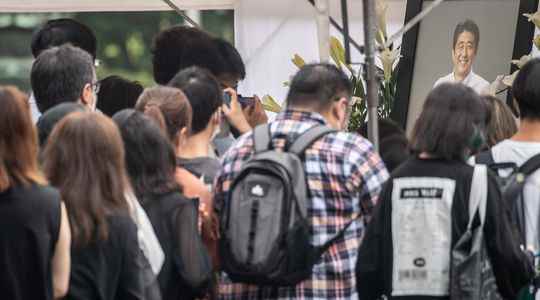Two metal pipes, some tape and a firing device. The weapon made by Tetsuya Yamagami to kill the former Japanese Prime Minister, Shinzo Abe, was craftsmanship. The former sailor had taken information from the Internet and transformed his small apartment into a miniature arms factory. A smell of gunpowder reigned in the accommodation, explained the police after their search. There was scrap metal and a profusion of chemicals for the manufacture of explosives.
Obstacle course
And for good reason. Obtaining a firearm in Japan is an obstacle course. Adopted in 1958, very restrictive legislation governs the acquisition of a shotgun or a compressed air rifle, knowing that handguns are totally prohibited. No less than thirteen steps are necessary for the aspiring shooter before being able to acquire his gun. First, you have to join a club, then take a course leading to a written exam. A mark lower than 95% is eliminatory.
Then you also have to pass a psychological examination and a drug test. Needless to say, the criminal record is scrutinized with the utmost attention. Finally, the ad hoc police department carries out a meticulous investigation into the professional career, relatives and work colleagues and, also, into any links with extremist movements or gangs.
For a few more sockets
Added to this is the scarcity of armories. According to the law, there cannot be more than three per department. To buy new cartridges, it is necessary to bring back the used casings.
Deterrent! The number of firearms in circulation continues to decline. The police now count only 300,000, against nearly 350,000 in 2012. As a corollary, delinquency has also declined since 2002. Japan had only ten cases related to firearms last year, eight of which involving the underworld. There was only one dead and four wounded by gunfire. And no gun-related deaths, or even injuries, in Tokyo!
Better: in 2019, the number of deaths by gunshot did not exceed 0.06 per 100,000 inhabitants, against 2.83 in France. To be reported to the 45,222 American victims in 2020, or 124 deaths per day, a historic record, according to the Center for Disease Control and Prevention. And to the 393 million guns owned by 329 million Americans…
In Japan, the legislative framework stems from a particular history in a country where firearms made their appearance in the 15th century, with the muskets brought by the Portuguese. Subsequently, the control of arms varied according to the lordships, but the rules concerned rather the carrying of sabers. The prohibitions aimed above all “to consolidate class differentiation by disarming those who were not warriors”, explains Tamara Enomoto, of Meiji University in Tokyo. The rules varied: some seigneurial estates encouraged their population to keep their arms.
898,000 katanas
The abolition of classes during the Meiji modernization period (1868-1912) led the new power to adopt a Regulation of Firearms in 1872, which restricted the carrying of weapons for military use to holders of a special permit. For Tamara Enomoto, it was then a question of “distinguishing the depositaries of an authority from the rest of society”. At the time, it was not forbidden to have weapons at home.
The real change dates from the post-war period, when the American occupiers forced the Japanese government to disarm the population, by recovering all weapons, white and fire. Reluctant for a time, Tokyo finally complied. The operation recovered 395,000 rifles, 898,000 sabers (katanas) and 144,400 spears. Since then, Japan has continued to tighten its legislation. “The fact remains that the United States [NDLR : un pays qui, dans sa Constitution, garantit à tout citoyen le droit de détenir une arme] are at the origin of one of the strictest gun control laws in the world”, observes, not without irony, Tamara Enomoto.
